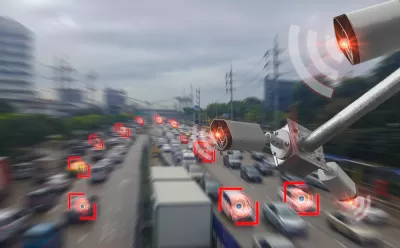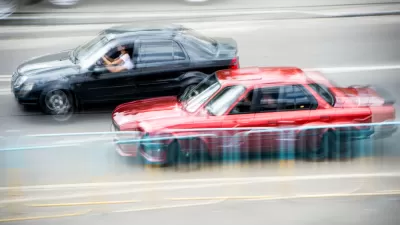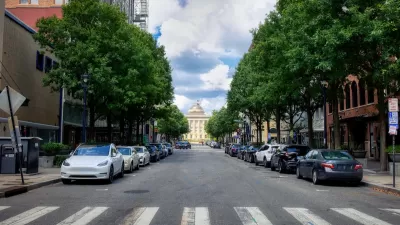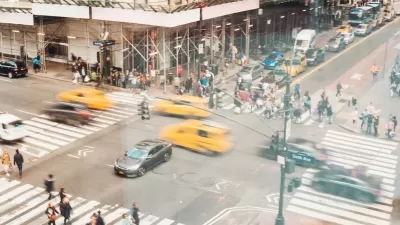Forget self-driving cars—some low-cost artificial intelligence tools can improve traffic safety now.

Although autonomous vehicles frequently steal the media spotlight, Tanya Mohn argues that there are more practical, immediate ways to use artificial intelligence to improve traffic safety. As Mohn writes, “Artificial intelligence is already being used to enhance driving safety: cellphone apps that monitor behavior behind the wheel and reward safe drivers with perks and connected vehicles that communicate with each other and with road infrastructure.”
According to David Ward, president of the Global New Car Assessment Program, there are several “beneficial, low-cost, intermediate technologies that are available now. A prime example is intelligent speed assistance, or I.S.A., which uses A.I. to manage a car’s speed via in-vehicle cameras and maps,” a technology that will soon be mandatory in the European Union.
Other technologies include cameras that can assess distracted driving behavior, allowing law enforcement to see whether a driver is holding a phone below the dashboard, for example. Some transportation and city officials see A.I. as a tool that can further Vision Zero goals. Data gathered and analyzed using A.I. tools can help transportation planners understand traffic patterns and anticipate trends. And while some see speed cameras as a discriminatory revenue grab, others believe automated traffic enforcement can reduce potentially violent interactions with law enforcement and save lives by reducing crashes.
“Not everyone is sold on a reliance on computer learning. Mr. Ward, of the Global New Car Assessment Program, said humans still outperform artificial intelligence.” Additionally, “As with many A.I. innovations, the technology also raises privacy issues.” Policymakers looking to use A.I. to improve traffic safety will have to balance the benefits of the technology with privacy and liberty concerns.
FULL STORY: Can A.I. All but End Car Crashes? The Potential Is There.

Trump Administration Could Effectively End Housing Voucher Program
Federal officials are eyeing major cuts to the Section 8 program that helps millions of low-income households pay rent.

Planetizen Federal Action Tracker
A weekly monitor of how Trump’s orders and actions are impacting planners and planning in America.

Ken Jennings Launches Transit Web Series
The Jeopardy champ wants you to ride public transit.

Rebuilding Smarter: How LA County Is Guiding Fire-Ravaged Communities Toward Resilience
Los Angeles County is leading a coordinated effort to help fire-impacted communities rebuild with resilience by providing recovery resources, promoting fire-wise design, and aligning reconstruction with broader sustainability and climate goals.

When Borders Blur: Regional Collaboration in Action
As regional challenges outgrow city boundaries, “When Borders Blur” explores how cross-jurisdictional collaboration can drive smarter, more resilient urban planning, sharing real-world lessons from thriving partnerships across North America.

Philadelphia Is Expanding its Network of Roundabouts
Roundabouts are widely shown to decrease traffic speed, reduce congestion, and improve efficiency.
Urban Design for Planners 1: Software Tools
This six-course series explores essential urban design concepts using open source software and equips planners with the tools they need to participate fully in the urban design process.
Planning for Universal Design
Learn the tools for implementing Universal Design in planning regulations.
Ada County Highway District
Clanton & Associates, Inc.
Jessamine County Fiscal Court
Institute for Housing and Urban Development Studies (IHS)
City of Grandview
Harvard GSD Executive Education
Toledo-Lucas County Plan Commissions
Salt Lake City
NYU Wagner Graduate School of Public Service





























